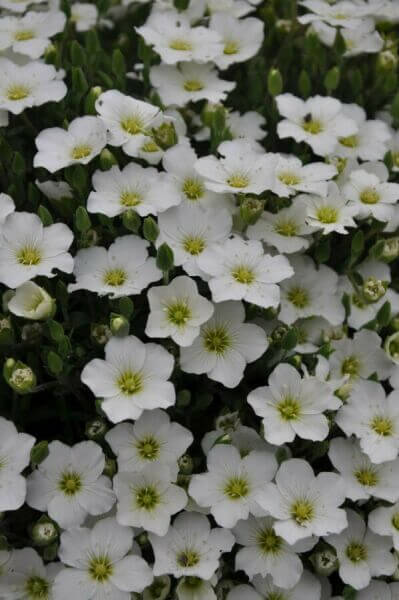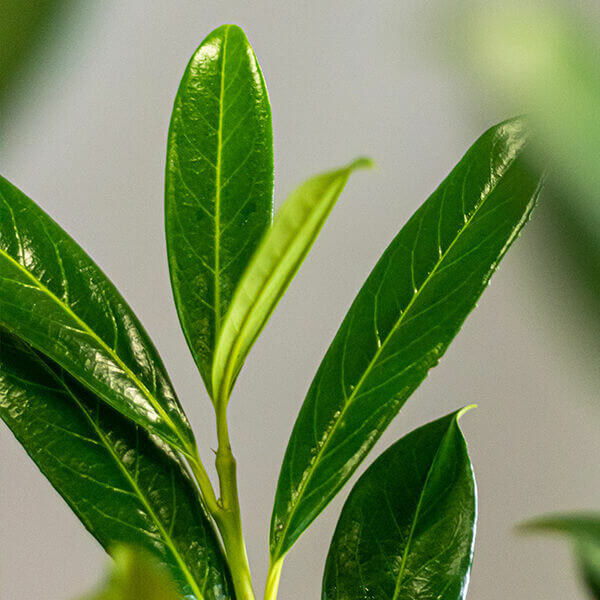Best Hedge Plants For Hedges And Screens
Best Hedging Plants For Rooftop Gardens
Enhance your garden's attraction with rich hedge varieties such as Yew (Taxus), Thuja, Laurel, Photinia, and Bamboo, commemorated for their structural integrity and ecological benefits.
Yew and Thuja offer evergreen protection and winter durability, while Laurel uses fast development and broad, aromatic leaves.
Photinia adds seasonal beauty with its vibrant red foliage, and Bamboo provides a low-maintenance, serene ambiance.
These hedges enhance air quality, reduce sound, and develop tranquil, private spaces.
Correct planting, spacing, and maintenance ensure energetic growth and eco-friendly harmony.
Explore how these lavish ranges can elevate your garden's charm and wellness.
Secret Takeaways
Change Your Garden With Lush Hedge Varieties
- Select Yew for its dense, evergreen growth and unequaled durability.
- Opt for Laurel for its fast growth and broad leaves, making sure quick personal privacy.
- Pick Photinia for its vibrant seasonal foliage, which turns a striking dark red.
- Utilize Bamboo for a low-maintenance, winter-hardy hedge with aesthetic appeal.
- Space plants 2-3 per meter and prune routinely for ideal growth and health.
Popular Hedge Plants
When transforming a garden with rich hedge ranges, it's important to think about popular hedge plants such as Yew, Thuja, Laurel, and Photinia due to their special attributes and advantages.
Yew (Taxus) is extremely respected for its durability and thick, green growth, making it a prime choice for sustaining landscapes.
Thuja is kept in mind for its evergreen foliage and robust winter season strength.
Photinia adds seasonal vibrancy with red leaves that darken in time, producing dynamic visual appeal.
Laurel offers rapid growth and aromatic, broad leaves, perfect for fast privacy.
Furthermore, Bamboo is an outstanding choice for ambiance, offering a low-maintenance, winter-hardy choice that enhances the garden's aesthetic with its elegant, swaying walking canes.
These choices accommodate a variety of horticultural needs and choices.
Advantages of Garden Hedges
Garden hedges provide a wide variety of advantages, making them a valuable addition to any landscape. These natural barriers are cost-effective to carry out and offer significant wind defense, improving air circulation and adding to sound reduction. The thick foliage of hedges like Thuja and Beech guarantees privacy by blocking visibility, developing a remote and serene environment.
Hedges likewise play a vital function in microclimate regulation, providing a steady environment that fosters plant development and reduces temperature fluctuations. Their detailed leaf structures filter contaminants, enhancing air quality and adding to a much healthier garden community.
Additionally, hedges stand out in sound reduction, absorbing and deflecting sound waves to lower ambient sound levels. This dual functionality of supplying both visual and acoustic personal privacy enhances the total tranquility and aesthetic appeal of any garden.
Planting and Upkeep Tips
For a successful hedge, precise preparation of the planting location is crucial. Guarantee the soil has correct pH and drainage to support strong root development.
Area the plants appropriately for the chosen types. Water the hedge regularly throughout its initial growth stage, changing as required with seasonal changes.
Implement a methodical bug control and disease prevention technique, utilizing natural or chemical treatments when needed. Frequently inspect for aphids, mites, and fungal infections.
Apply mulch to keep wetness and reduce weeds. Seasonal pruning promotes thick development and air circulation, essential for plant health.
Following these guidelines will assist you cultivate a lively, well-kept hedge that improves the appeal of your garden.
Spacing and Trimming Standards
Spacing and Trimming Guidelines
Appropriate spacing and cutting are essential for cultivating healthy, aesthetically appealing hedges. Sufficient spacing guarantees each plant gets enough nutrients, light, and air flow.
Follow these standards for optimum hedge upkeep:
- Spacing: Position hedge plants 2-3 plants per meter to motivate robust development.
- Pruning Strategies: Routine pruning is vital for keeping wanted hedge height and shape. Cut brand-new growth in summertime and cut down older wood throughout winter season.
- Seasonal Care: Adjust cutting methods and schedules according to seasonal requirements to make sure plant health.
- Hedge Height: Regularly monitor and cut to keep the preferred hedge height and accomplish uniform visual appeals.
Complying with these actions will guarantee your hedge prospers, improving both the appeal and performance of your garden.
Selecting the Right Hedge
Choosing the Right Hedge
Picking the proper hedge involves evaluating elements such as mature height, foliage density, and environmental durability. Successful hedge plant selection requires understanding each species' development characteristics and site-specific versatility.
For example, Yew (Taxus) provides exceptional durability and thick development, while Thuja is noteworthy for its winter resilience. In addition, thinking about maintenance requirements is important; fast-growing species like Laurel or Privet need regular cutting, whereas low-maintenance choices like Bamboo or Ivy might be more effective for those seeking very little upkeep.
Ecological factors such as soil type, light schedule, and moisture conditions must also direct the choice process. This cautious technique guarantees the picked hedges will thrive, offering both practical and aesthetic benefits to the garden landscape.
Shipment and Planting Guidance
To guarantee your hedge plants prosper, they need to be provided by specialized couriers and planted promptly upon arrival.
Follow these important steps for successful planting:
- Soil Preparation: Improve the soil with natural matter to enhance drainage and nutrient content.
- Planting Depth: Create a trench two times the width and equivalent to the depth of the root ball.
- Watering Methods: Water thoroughly after planting, keeping the soil regularly wet but not saturated.
- Mulching: Use a layer of mulch to maintain wetness and suppress weeds.
Customer Assistance and Service
Provided the vital function of timely help in horticultural pursuits, our consumer support team is offered six days a week through telephone, e-mail, and social media to provide skilled guidance and promptly deal with any issues. Their commitment to fast action times ensures customer satisfaction by dealing with questions related to plant health, optimum planting approaches, and upkeep schedules.

-------------------
Email
This extensive assistance system, enhanced by an excellent 9.3/ 10 customer score, highlights our dedication to improving the gardening experience for every single customer.
Regularly Asked Concerns
The Length Of Time Does It Consider Hedge Plants to Develop?
Hedge plants usually need one to 3 years to end up being totally developed, with the specific period differing by types and growing conditions.
Efficient care during this critical duration is necessary for robust development. Constant watering, alert weed control, and suitable fertilizer application are pivotal in promoting strong root advancement.
For example, fast-growing types like Laurel might establish quicker, while slower-growing varieties such as Yew might take longer. Thorough maintenance accelerates the facility procedure, resulting in healthy and thick hedges.
What Are the very best Hedge Plants for Privacy?
The question of the very best hedge plants for personal privacy includes examining evergreen and deciduous options.
Evergreen hedges like Thuja, Laurel, and Cypress offer year-round protection, making sure constant privacy.
In contrast, deciduous hedges such as Beech provide seasonal personal privacy, shedding leaves in cooler months.
Secret maintenance suggestions for privacy hedges include regular trimming, fertilizing in spring, and appropriate spacing-- usually 2 to 3 plants per meter.
In addition, constant watering and diligent weed elimination are crucial for promoting healthy, dense growth.
Can Hedge Plants Attract Wildlife to My Garden?
Yes, hedge plants can attract wildlife to your garden by providing essential benefits like shelter, food, and nesting websites, therefore boosting regional biodiversity. For example, yew, holly, and laurel are exceptional for drawing in birds, while ivy supports a variety of insects.
However, it is necessary to keep in mind that there are some downsides, such as increased upkeep to manage bugs and routine upkeep. Carefully picking and preserving hedge varieties can assist stabilize these disadvantages and benefits, eventually promoting a sustainable and lively community in your garden.
Are There Any Blooming Hedge Plants Available?
Yes, there are flowering hedge plants readily available that can boost the charm of your garden.
For example, Elaeagnus, likewise referred to as Olive Willow, produces aromatic white flowers in the fall, adding a touch of elegance.
Photinia, another popular choice, showcases vibrant red leaves that develop into a rich green, producing a dynamic visual impact throughout the seasons.
To make sure these plants prosper, it's important to practice appropriate pruning techniques and seasonal maintenance, such as cutting new development in the summer and cutting down in the winter season.
These measures will assist keep the health and aesthetic appeal of your flowering hedges.
How Do I Avoid Pests in My Hedge Plants?
To prevent insects in hedge plants, use natural pest control techniques and maintain proper hedge care. Present beneficial bugs like ladybugs, which victimize harmful insects, to develop a balanced environment.
Regularly inspect your hedges for signs of invasion and quickly eliminate any afflicted parts to avoid the spread. Ensure the health of your hedges by applying balanced fertilizers and offering sufficient water.
Use mulching to maintain soil moisture and appropriate spacing to decrease plant stress and promote robust growth. These practices collectively help in lessening bug concerns and keeping a healthy hedge.
Conclusion
In essence, choosing the right hedge ranges such as Yew, Thuja, and Laurel can change any garden into a relaxing sanctuary. These plants offer year-round greenery, enhance aesthetic appeal, and offer useful advantages like noise reduction and wind protection.
Proper planting strategies, precise spacing, constant watering, and seasonal trimming are vital for optimal development.
Reputable delivery services and professional customer assistance make sure a seamless experience from purchase to planting, making it simpler than ever to raise your outdoor space.
Garden hedges use a plethora of advantages, making them a valuable addition to any landscape. These natural barriers are cost-effective to carry out and offer considerable more info wind protection, boosting air flow and contributing to noise decrease. The dense foliage of hedges like Thuja and Beech makes sure privacy by blocking visibility, developing a remote and serene environment.

Pruning Methods: Routine pruning is vital for preserving preferred hedge height and shape. Trim new development in summer season and cut back older wood throughout winter.